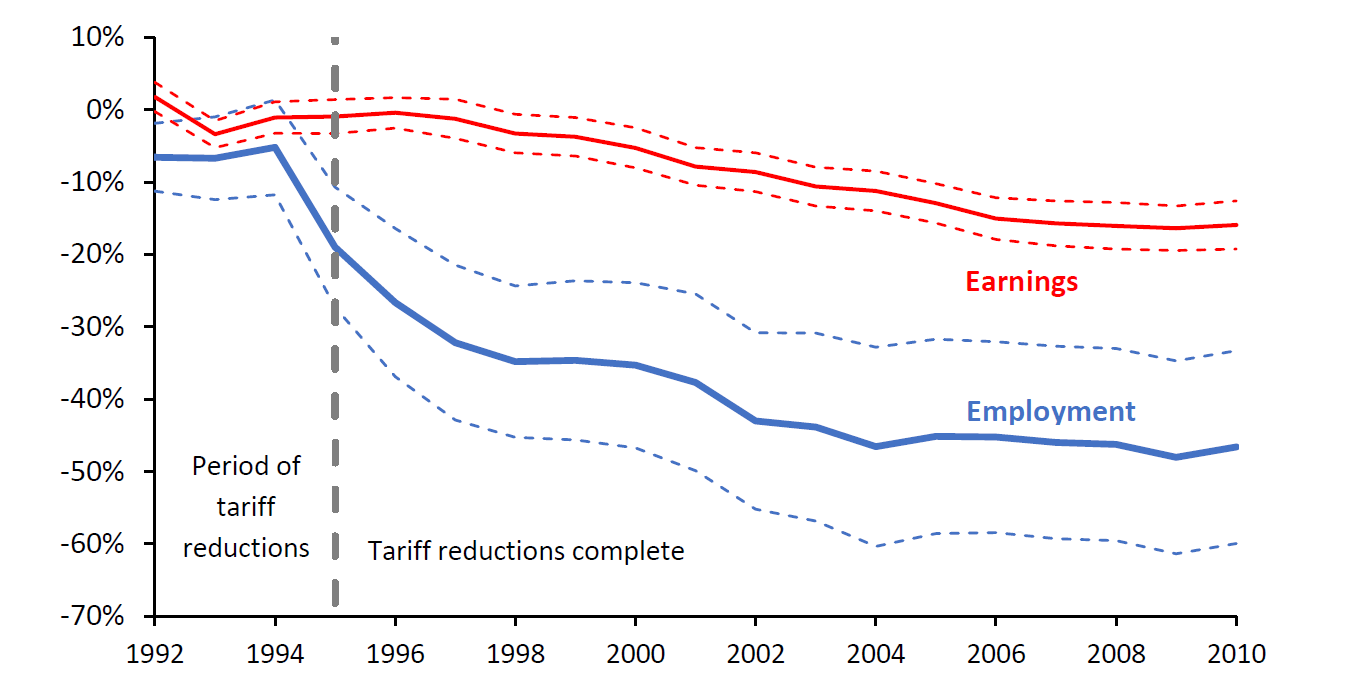While there is wide consensus that globalisation has benefited consumers through lower prices and a greater variety of goods, the effects of trade on workers have been more nuanced. In the late 1980s and 1990s, several studies documented a worldwide increase in the ‘skill premium’, i.e. the additional wages that educated workers get over less educated workers with otherwise-similar characteristics. Given that this increase coincided with the rise of imports from low-wage developing countries, trade emerged as a primary suspect behind the increase in this particular dimension of inequality. Indeed, conventional trade theory suggests that in advanced economies, such as the US or the UK, greater openness to trade may hurt less-educated workers, since the goods they produce are also produced by cheaper workers in low-wage developing countries with whom they are now competing.
However, the first generation of empirical studies found that this hypothesis plays, at most, a supporting role to technological change in explaining rising inequality between skilled and unskilled workers. It seemed that, to the extent that trade had any significant effects on inequality between the high- and low-skilled, these were in interaction with technology. For example, pressure for firms in advanced economies to keep labour costs low, due to increasing import competition from low-wage countries, may have accelerated the adoption of technologies that reduce the amount of low-skilled labour they need to use.
More recently, starting in the early 2000s, the focus shifted towards a different dimension of inequality: inequality across space – a dimension of inequality that may be important for electoral outcomes, among other things. Several studies examined how trade liberalisation has differentially affected regions within a country depending on how exposed their industries were to import competition from abroad. This literature has found strong effects of trade on regional inequality for several countries (e.g. the US, India, Brazil and Vietnam). These effects are often downplayed as being only short-run and transitional in nature. Conventional wisdom suggests that such effects would disappear in the long run, as workers and firms move away from adversely affected sectors and regions towards those that are expanding.
However, a recent literature has questioned this premise. For example, a study on Brazil examined what happened when different parts of Brazil saw different-sized reductions in tariffs (due to different industrial composition) between 1991 and 1995. The chart illustrates that areas seeing larger tariff declines experienced declines in earnings and employment in the formal sector (relative to less affected regions) and that these declines persisted for many years, taking about 15 years to stabilise at lower levels. A study of the effects of Chinese import competition on regional inequality in the US echoes this message. These findings question conventional wisdom on the length and role of the adjustment process. They suggest that the ‘long run’ may be very long, spanning more than a decade, and that potentially adverse effects do not necessarily dissipate in the long run.
Tariff reductions in Brazil, 1991–95
 Estimated effect of tariff reduction of 10 percentage points on local earnings and employment relative to other regions
Estimated effect of tariff reduction of 10 percentage points on local earnings and employment relative to other regions
Note: Reproduced from figures 3 and 4 of Dix-Carneiro and Kovak (2017), with kind permission from the authors. Dashed lines represent 95% confidence intervals.
Interestingly, studies on European countries have not found effects as dramatic as those in earlier studies of the US or developing countries. Specifically, import competition from China does not seem to have affected European countries in the same way as the US.
This observation raises several questions. Why do the impacts differ from one country to another? Why do, for example, Germany and Denmark seem to absorb trade shocks more effectively than the US, without the same acute and persistent negative impacts on groups of workers in particular areas? What has been the role of policy in countries’ differential experiences? Which policies and institutions are important and why?